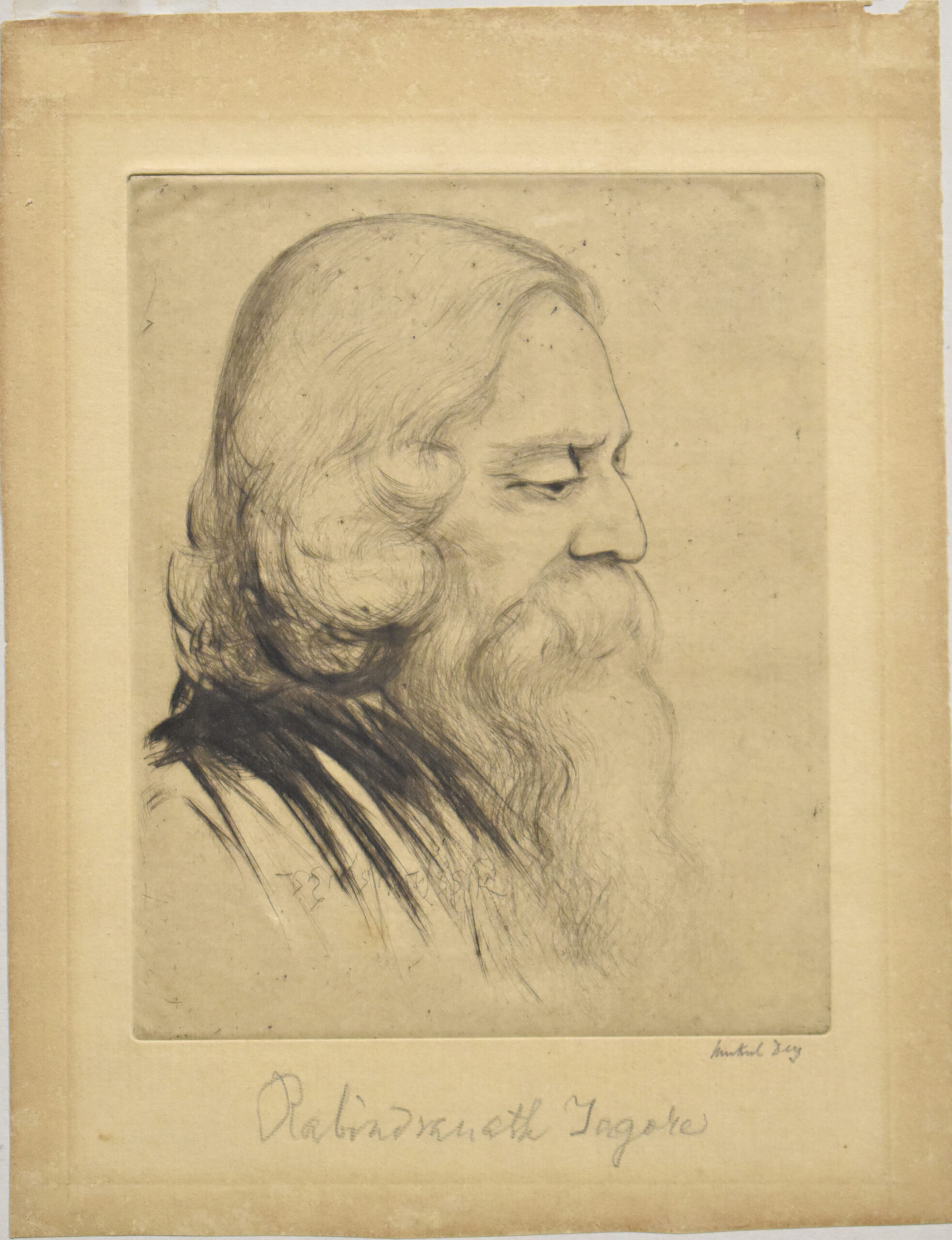Rabindranath Tagore (1861 – 1941)
Poet, writer, social reformer and painter
Artist Mukul Dey (1895 – 1989)
dated 1925, Drypoint
9 x 7 in. (22.9 x 17.8 cm.)
These rare and historic drypoint by the renowned Indian artist Mukul Dey captures three towering figures of the 20th century— Rabindranath Tagore, Prabhashankar Pattni, and Albert Einstein. Each portrait is not only a masterwork of technique and observation but also bears the rare distinction of being signed by the respective sitter, adding an invaluable historical and personal dimension to these works.
The portrait is etched with remarkable sensitivity and detail, presenting the poet-philosopher in a contemplative profile. The drypoint print is personally signed by Tagore in English, making it a treasured artifact from the period. Tagore and Mukul Dey shared a profound intellectual and artistic bond. Dey was a student at Santiniketan. He absorbed the spirit of Tagore’s vision and values, which later resonated deeply in his own creative practice. The portrait reflects the depth of Tagore’s meditative presence.
Another significant work is the drypoint portrait of Prabhashankar Pattni, the Diwan (Prime Minister) of Bhavnagar State and a close associate of Mahatma Gandhi. A reformist and statesman, Pattni was known for his administrative wisdom and progressive ideals. Dey’s treatment of Pattni is dignified and introspective, revealing a man of intelligence and integrity.
Equally remarkable are the two drypoint of Albert Einstein, created by Mukul Dey in 1926 during his international travels. These works are rare visual records of Einstein made during the interwar years, and both drypoint prints include Einstein’s sign which was etched on the plate. Mukul Dey’s portrayal captures Einstein’s thoughtful expression and the unique energy of one of history’s greatest scientific minds.
Mukul Dey, a pioneer of modern Indian printmaking, was the first Indian to formally study etching abroad, particularly at the Royal Academy in London under Sir Frank Short. He brought the medium to India and made it his own, combining Western techniques with Indian subjects and personalities. Dey’s close associations with many influential figures of his time allowed him intimate access to his sitters, resulting in deeply insightful and technically accomplished portraits.
These works are not just artistic achievements but are also vital cultural documents—bringing together art, history, and biography through the hand of a master printmaker.
